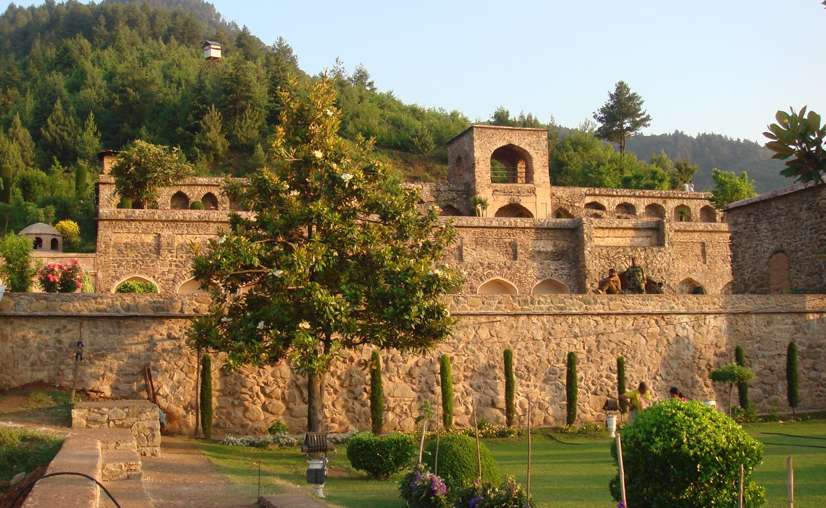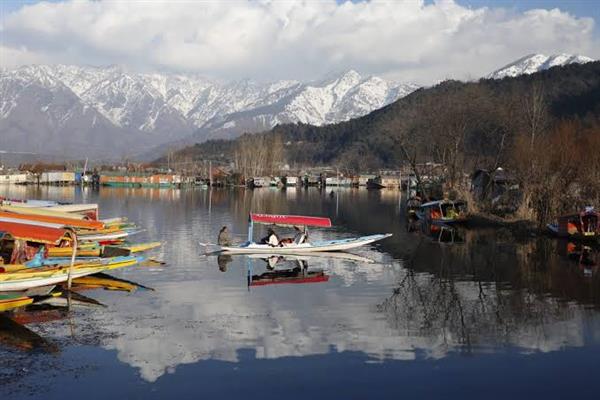Pari Mahal, also known as The Palace of Fairies, is located at the top of the Zabarwan mountain range, overlooking the city of Srinagar and the south-west of Dal Lake. The place is a remarkable example of Islamic architecture and patronage of art during the reign of the then Mughal Emperor Shah Jahan.
The garden is 5 kilometres away west of the centre of Srinagar and consists of six-terraces aligned roughly north-south, with its uppermost point at its southern end, and arched retaining walls supporting the terraces against the mountain. Unlike other Mughal gardens in Kashmir, this garden contains no water cascade or chadars (ramps transferring water from one terrace to another). Its water tanks, which may have formerly contained fountains, are found on different terraces, but they were filled via underground pipes rather than by a flow of water above ground. The overall measurement of the garden is 122 meters long by 62.5 meters width at its widest point while its terraces vary in width.
According to historians, the Pari Mahal was initially a school of Astrology and Mughal observatory, which was built by the eldest son of Shah Jahan, Prince Dara Shikoh in 1640 CE. The prince loved Kashmir and was a great admirer of mysticism. He loved visiting Kashmir and liked having discussions with learned men, who visited with him. During his visits, Dara Shikoh used to live in Pari Mahal. However, after the assassination of Prince Dara in 1659, the Mughal Emperor Aurangzeb took the reins of the empire.
However, legend says that there is another reason how Pari Mahal got its name. There is, however, debate among scholars as to how Pari Mahal got its name.
The garden is just a five-minute drive from the beautiful Cheshma Shahi Gardens.
The visitor enters the gardens through a domed double archway in the centre of an entrance complex. Additional rooms within the complex are entered from the garden side and from within the gateway proper. Their use has been conjectured to include a hammam and a kitchen. Traces of water pipes have been found in at least three of the rooms in the complex, and the possible hammam is the most highly ornamented room within the structure.
Pari Mahal is the garden including a small spring, surrounded by beautiful flowers that have been planted and well-groomed in terraces being vanquished by the remains of the majestic monument.
This tourist attraction can be visited all year round. However, the weather remains pleasant during April and October, which is the best time to visit it.
For planning a visit can reach JKL Travels, who can facilitate the services






